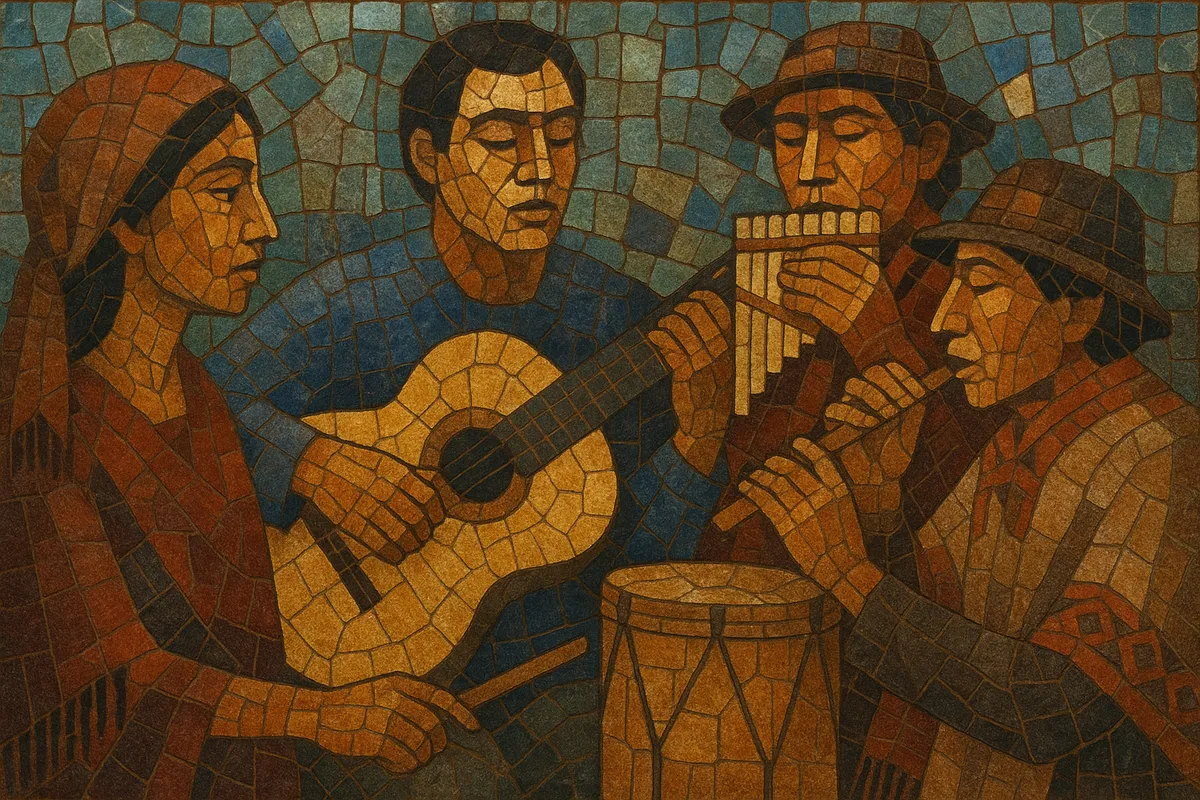Nueva canción is a Latin American song movement that emerged in the 1960s, blending traditional folk forms with contemporary, socially engaged songwriting. It foregrounds poetic, politically conscious lyrics that address social justice, labor, indigenous rights, anti-imperialism, and everyday dignity.
Musically, it draws on Andean and Southern Cone folk idioms—such as cueca, zamba, and chacarera—alongside pan-Latin ballad traditions. Typical instrumentation includes nylon-string guitar, charango, quena and zampoña (panpipes), bombo legüero, and rich vocal harmonies, often arranged for ensembles. The style’s melodic language favors modal inflections and singable, anthemic choruses designed for communal participation.
While it became a continent-wide phenomenon, Chilean artists were especially pivotal in shaping its aesthetics and political ethos, with the movement later radiating into Argentina, Uruguay, and Spain.
Nueva canción took form in Chile in the early-to-mid 1960s, building on folk revivals and the work of key culture-bearers like Violeta Parra. Artists re-centered local forms (cueca, tonada) and Andean sounds (charango, quena) while embracing a modern, author-driven approach to lyrics. The songs were crafted as poetic narratives and manifestos, addressing land reform, workers’ rights, and cultural identity. Parallel currents appeared in Argentina (Nuevo Cancionero) and Uruguay, forming a broader continental movement.
During the Popular Unity period in Chile, nueva canción became a powerful voice of civic participation—embodied by Víctor Jara, Inti-Illimani, and Quilapayún. Following the 1973 Chilean coup, the movement faced censorship, exile, and persecution; many ensembles continued abroad, turning exile into a creative and organizational lifeline that internationalized the sound and message.
The movement’s ethos resonated across Latin America. In Argentina, Mercedes Sosa and colleagues amplified socially grounded repertoire; in Cuba, nueva trova reflected related aesthetics; in Spain, nueva canción española adapted the model to Iberian languages and contexts. Festivals, solidarity concerts, and recordings helped circulate repertory and repertoire-sharing among artists.
After democratic transitions, many groups returned home, and nueva canción’s repertoire entered the canon of Latin American popular and folk music. Its influence persists in Latin alternative, rock en español, indie folk, and modern cantautores, where acoustic timbres, Andean colors, and lyric activism continue to inform songwriting and community-based performance.


